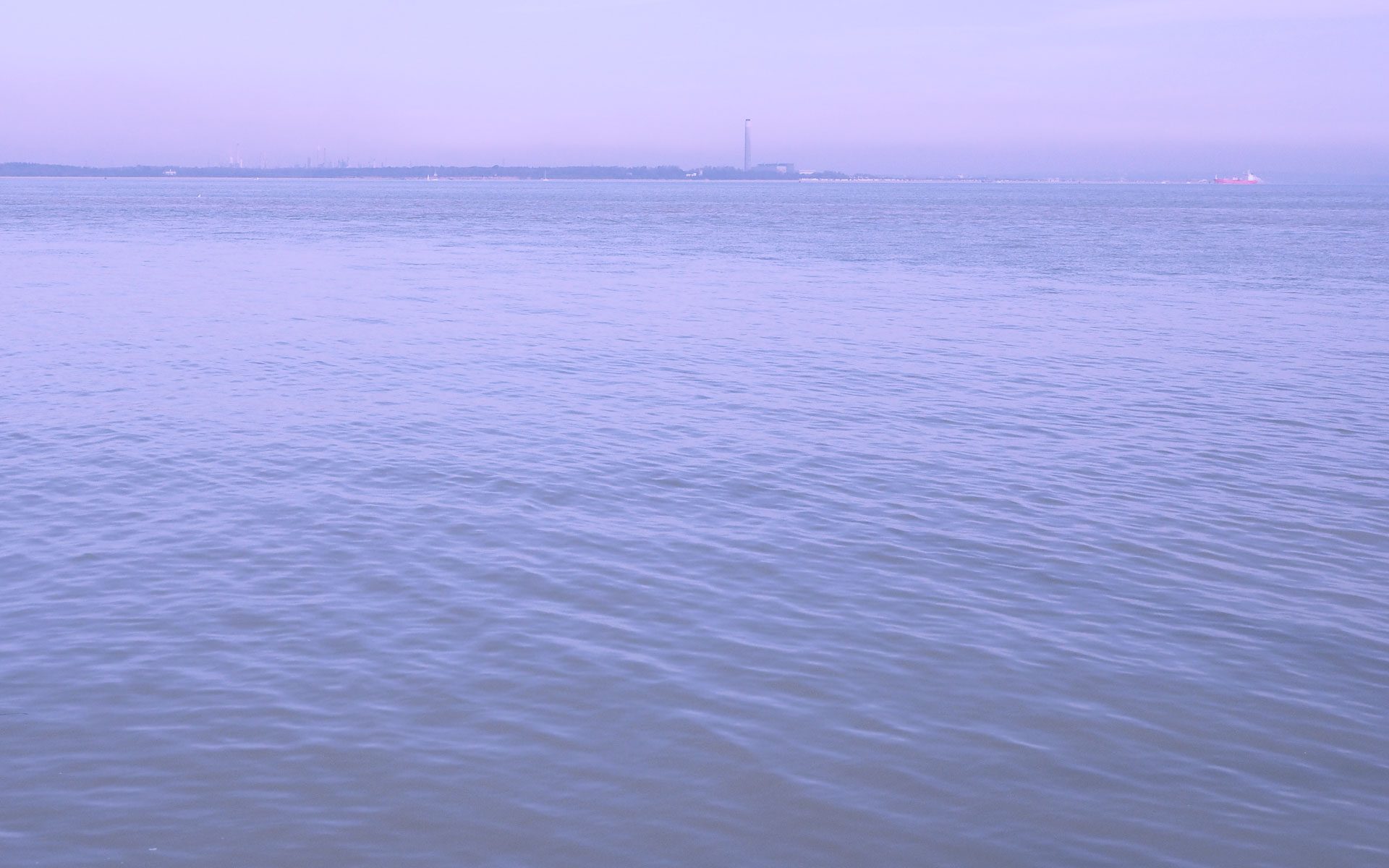Once described as "Britain's oddest lighthouse", the Nab Tower is an unusual maritime landmark upon which few have set foot. As the BBC gains exclusive access, it takes a closer look at the history of the isolated outpost.
What is it?
Essentially a steel and concrete cylinder, it was built in Shoreham, Sussex, in 1918 at a cost of £1m.
The imposing 90ft (27m) tall, 40ft (12m) wide structure was part of a plan to protect the south coast from German submarines during World War One.
It was the first of eight outposts, which the admiralty had intended to link with steel nets to hamper enemy vessels.
But the conflict ended before the Nab Tower could be put to use, and a new purpose had to be found.
Eventually, it was decided the sole completed tower would serve as a lighthouse in the Solent shipping channel.
How did it get there?
Tugboats towed the tower out to sea, four miles east of the Isle of Wight, where it replaced a lightship which had marked the navigation point since 1812.
It has remained there since 1920.
A honeycombed concrete base - which fills with water when submerged - holds the lighthouse in position.
Though a marvel of early 20th Century engineering, it wasn't perfect - the tower has retained a constant three-degree tilt since it was sunk into position.
What was it like to work there? "
For 63 years, the Nab lighthouse was staffed by a team of three keepers, who lived there in one-month stints.
Gerry Douglas-Sherwood served on the tower in 1971.
"It was very industrial. It always smelled of coal, paraffin and oil," he said.
"If there was a heavy sea running, the whole thing would shake about. It was scary the first couple of times but it's amazing what you get used to.
"It was quite spacious for a lighthouse but, because it was an iron tower painted black, it was freezing cold in the winter and boiling hot in summer.
"The only warmth was from a coal-fired Rayburn where we did all our cooking."
Although the tower, which was used as the main location for 1951 Hammer horror The Dark Light, could be inhospitable and isolated, Mr Douglas-Sherwood said it wasn't without its perks.
"Each keeper had their own bedroom - in other lighthouses, keepers shared a room with bunks - so it was quite luxurious. We even had a shower.
"There was a relief every fortnight - they delivered food and fresh water, of course, which was stored in the bottom of the tower."
Are there still lighthouse keepers there?
No, in short. In 1983, the tower was upgraded to an automated light system, and has been unmanned ever since.
Solar panels were installed in 1995, and it is controlled from a centre in Harwich, Essex.
And these aren't the only changes over the last century.
The tower, which was once cased in steel - giving it the look of a "gas works run away to sea", according to one 1920s news report - had a makeover last year.








